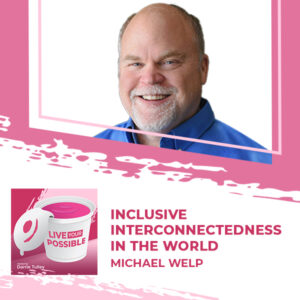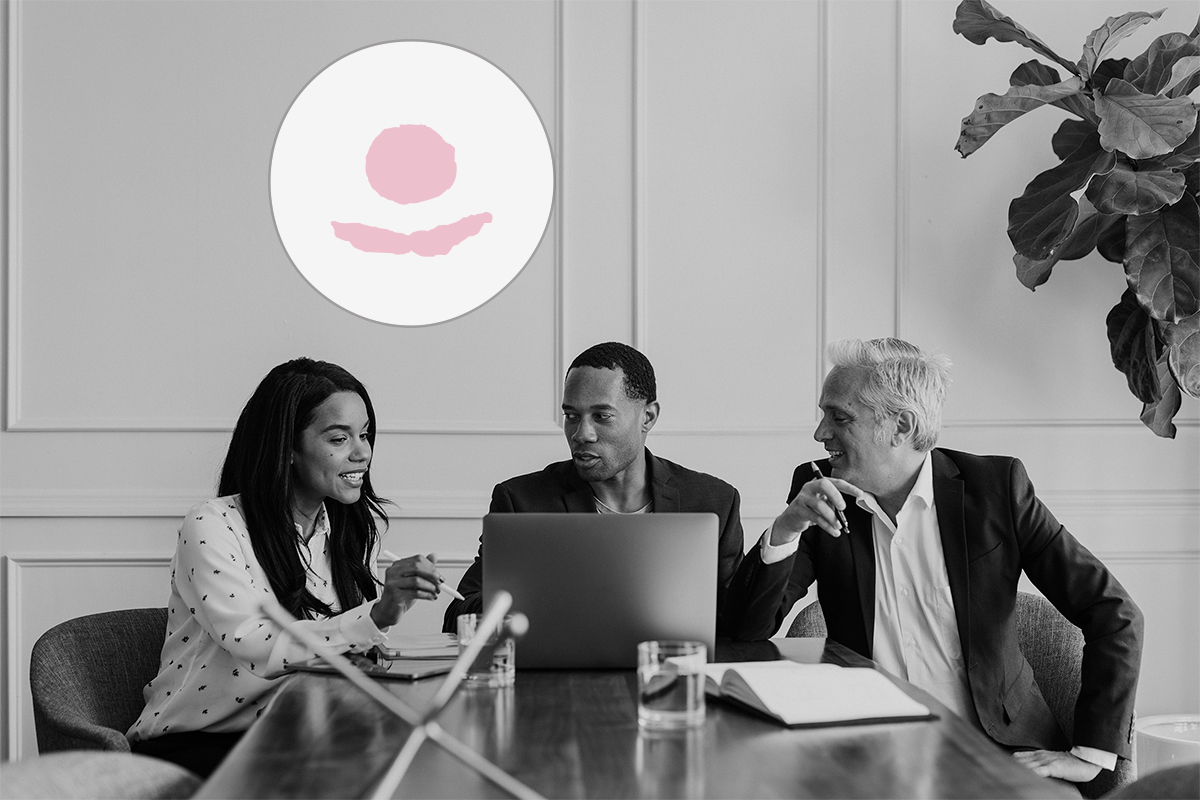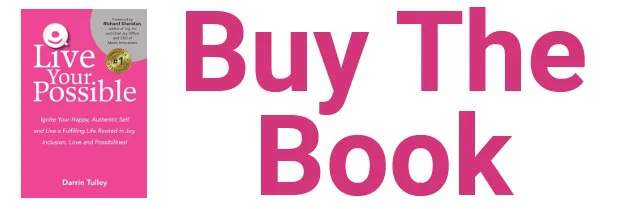
Many leaders rob their people of their humanity, dignity, and motivation. Businesses and societies are at risk unless we shift the paradigm to understand how to unlock human capabilities and capacities. Our guest today is a pioneer in this positive movement for leaders and organizations to help prevent leaders from causing suffering and how to unleash scalable human potential in the workplace. Jane E. Dutton, a co-founder of the Center for Positive Organizations, shares tips to design a service for human flourishing at work through job crafting, building highly connected organizations, showing compassion and empathy, and creating positive meaning where people matter. Dive into this episode with Jane Dutton to uncover all the wisdom and resources that she provides us to set humanity back on the right track.
—
Watch the episode here
Listen to the podcast here
Human Flourishing And Wellbeing With Jane Dutton
Jane Dutton is a distinguished University Professor at Emerita, a Business Administration in Psychology at Michigan Ross Business School. She’s a Cofounder of the Center for Positive Organizations and a Leader in Positive Organizational Scholarship. Jane has shared her passion and expertise in creating thriving organizations as a professor, researcher, and author of over 100 published articles and books.
She is one of the pioneers of the Positivity Movement over the last many years. Jane has provided critical research to show us what is possible when we focus on human flourishing networks. She sees a crucial connection between understating theories of flourishing networks and the importance of building and changing organizations for the better. Read further because Jane personally shares her positive identifiers and business crushes on leaders doing the work and ultimately shares and opens up about what she is actively learning to get better herself.
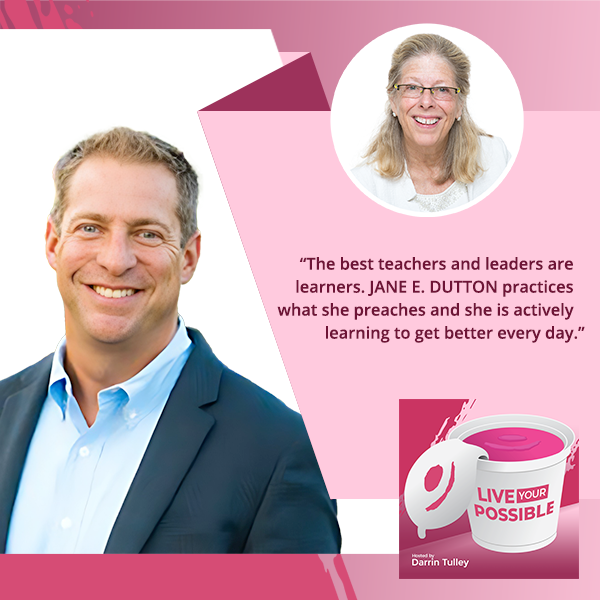
She shares tips on how to improve the way you do your job and create more joy and positive connections through what she calls job crafting. Jane shows us how this exercise even impacted her way of being and thinking as a professor. Jane is a continuous learner. The best teachers and leaders are learners, and she opened up about some areas where she is pushing herself to learn and unlearn, including where there is silence in the face of difference.
I asked how the Center for Positive Organizations came about with her cofounders. It might surprise you. She even admits that the research that was once viewed as weird many years ago about compassion and forgiveness are some of the softer skills separating organizations from others now. Jane shows us examples of practitioners and how it is impacting business results around the world. Admittedly, there is work to do, and Jane graciously provides us with a download of her knowledge. Read, get ready to pause, reflect and take a few notes on actions you can take. Enjoy the show.
—
Welcome, Jane. It’s such a thrill to have you on the show and I’m excited to talk to you. There are so many things I want to ask you. We probably need hours. I know we can’t do that, but welcome to the show.
Thank you. It’s so good to be here. I am glad to have the chance to talk.
It’s good to see you again, and I’m honored to chat with you. You’ve been recognized with so many honors, awards, and so many publications with your articles and books. One of the things that I’m most excited to talk to you about is how you were a cofounder of the Center for Positive Organization. You did that many years ago. I’d love to know from you. How did that happen back in 2002? What was going on in the world? What was going on with your group? How did you come up with this idea to move that forward?
Each of us that was involved with the start of this has a different story to tell, so you’re going to hear my story. I was on a traditional path of strategy, organization, and behavior research. I was studying agenda building and all these legitimate organizational change-related topics. We had a trauma in our family, and that is what turned me towards this work.
It made me curious about how organizations could be healing spaces or not and how work organizations could either foster human healing from trauma or not. That represented a real shift for me from doing this more traditional and what was considered legitimate research into a topic that was personally meaningful but was not in the conversation at all in my field.
I’d started a whole program. I worked with a group of graduate students on compassion, but it was tucked away to the side. We’d close the door and do our research. It was so meaningful to us, but thought it was going to be a long road to try to make it legitimate. That’s one thing. I started to do work on compassion, which was a weird considered off the normal track of research (at the time).
One of my former students who had worked with the people at the University of Pennsylvania was asked to create a work pod when Martin Seligman and a whole bunch of people went to Mexico in the 1990s to reimagine psychology from a more positive lens. I got to go as a more senior organizational researcher and listen to all these psychologists reimagine and think about how their work could be different and the topics and questions could change if they looked not at how negatively deviant experiences of people went to normal but if you went to normal to positively deviant experiences.
I had one of those on-my-knees moments of a sense that if psychology turned toward understanding human flourishing and understood it better, that would be great. The question is how you could scale it. How could you scale designing situations that capitalized on these positive psychology processes that promoted human well-being? You needed to understand organizations and how to design for scalable human flourishing.
I came back from Mexico completely jazzed about the possibility of how organizational studies could contribute to this view of redeveloping positive psychology. I came back and, Kim Cameron, one of my colleagues in the business school, had been studying human forgiveness in organizations which like compassion was one of these outside-the-norm things. Bob Quinn, another colleague, the way he was studying leadership was pretty unusual.
The three of us got together with two faculty in psychology, Chris Peterson who has since died unfortunately and Barb Fredrickson. We were doing this work in the summer, and we were planning a gathering in November 2001 to bring together organizational researchers or sociologists who might think about how you think about human flourishing from a more systemic perspective.
That was the root of it. It was this gathering, but the key is that then 9/11 happened. We had this commitment from this group of people to come in November together. If you remember what it was like on 9/11, everyone was scrambling to say, “How could I help? How can I make a difference?” We went to the Provost at Michigan, got a bunch of money to go study organizations in the wake of 9/11, and how they built back resilience and flourishing in the face of 9/11.
It was this huge injection of new insight into what’s possible in organizations. We created this website called Leading in Trying Times. We had everybody who was coming to this conference write a letter to leaders how about how their research could be leveraged to unleash human capacity and capability. We got all this feedback, which you normally don’t get from research until years about, “This perspective is useful.”
That was this supercharge of this perspective. Even though we didn’t know what the perspective was, we were birthing it as we were going. At that first conference, we had a lot of fabulous students that were there that have since become pretty famous like Adam Grant, Amy Wrzesniewski and Laura Morgan Roberts. They were all our PhD students at that time. We were imprinted by this service. It wasn’t about great research ideas. It wasn’t about how is our reputation going to be enhanced.
It was about how we could put organizational studies to use in terms of how to unleash scalable human potential. That was the route. We declared ourselves a center. There is a whole process you’re supposed to go through to become a legitimate center. Over a period of a year or two years, we became a center. We declared that and we got halftime support from the school because they were behind it at the time.
We had donors who wanted to give to it. It just became a thing, it became more legitimate. For many years, we’ve been trying to repurpose some of our teachings to having classes like designing for flourishing or taking typical organization behavior classes like culture and design and turning it into service of human flourishing, trying to address the students obviously at the University of Michigan.
You know from the business consortium that you’re a member of trying to service the critical learning community of businesses and different organizations as they learned their way into this paradigm. We’re also cultivating a community of researchers who were doing these things that seemed outside the margins and trying to pull it in to be a more legitimate set of studies.
Now, we have 700 researchers who are part of this community of scholars and part of their identity would be positive organizational scholarship. That’s a long story, isn’t it? It was trying to respond to what we saw as a need. I don’t think it would’ve been nearly as clear if there haven’t been such a pivotal event like 9/11 at the time.
What’s cool is the fact that you’re responding to the specific needs from individuals and employees. I think about all the people that are in these organizations that are held back or limited based on the way the world was being run at that time by different organizations. We had to get results. You had to get it done, and then 9/11 did happen.
It forces all to say, “Let’s go back to the basics. Is this the way we want to be? Is this how we should interact? Something’s missing here.” All the work that you’re doing, like you said, the pillars of forgiveness, compassion, leadership, and putting that all together is pretty instrumental. You think about that triangle of how that’s allowed us to open up and impact all the different leaders in different organizations. It’s incredible. I’m so excited for all that you’ve done. Could you imagine how many people you’ve impacted?
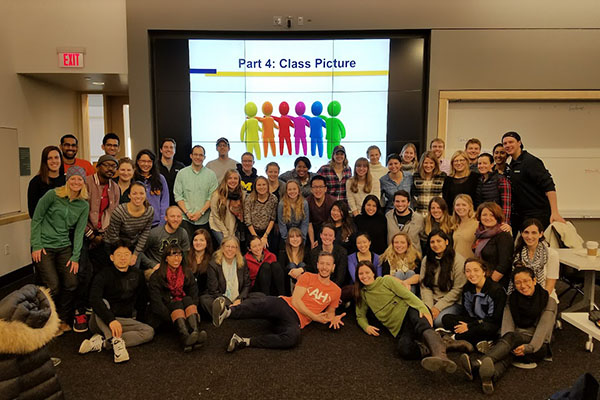
It’s still considered soft. I walked with someone who was a student. He was saying his faculty and his department were saying, “This whole POS stuff is too normative.” I’m like, “This is normative. It’s objective with our methods and stuff, but it is in service of trying to make a better, healthier set of workplaces.” It is normative in that sense, but that’s still seen as not rigorous and scientific and that thing.
It’s still a battle to make it more legitimate. The good news is this next generation of leaders cares about this stuff. They care about making a difference and the push towards sustainability and trying not to use up financial and material resources to be able to do good work or whatever an organization is doing in a more sustainable way. They get it. When people are in a flourishing state, they’re in a resource-producing state. They’re not in a resource consumption state.
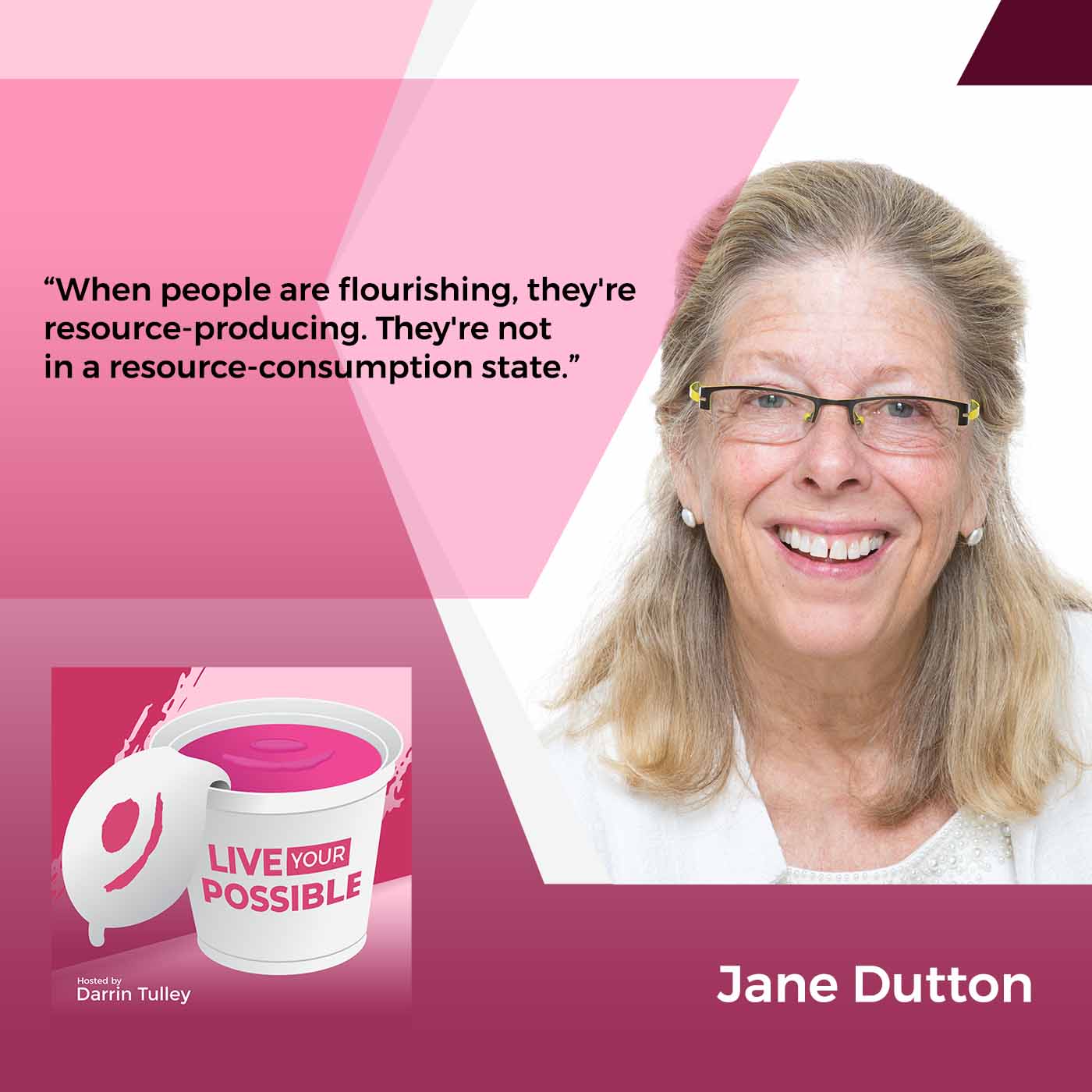
It aligns with what a lot of the next generation of leaders care about. You add that to what people’s experience has been during COVID where there has been so much trauma, suffering, uncertainty, and fear. Traditional problem-solving methods are not getting us to the place that we need to get to. I am hopeful, but I have to say, Darrin, it’s still not considered fully legitimate. I don’t care.
We’re in so much trouble unless we can shift the paradigm to understand more how human communities unleash capabilities and capacities. We’re going to be in this, as Bob would say, slow death. Not just as individuals but as institutions and as potentially whole societies. I’m as fired up if not more fired up about the need for this perspective, not alone.
It’s part of the missing piece of how we understand organizations. It’s not meant to say this was all wrong. It was saying, “This way of seeing leadership management organizing as a process is depleting human capacity and capability.” We need a companion logic and set of ideas about how you unleash that resourcefulness.
I have many conversations with different leaders. They tend to go into, “It’s hard to measure. How do we think about empathy? How do we think about bringing more joy in the workplace or showing more compassion? Doesn’t that go up against holding people accountable? Doesn’t that go up against driving the results that I need to get as a leader?” There is a lot of research, and I know the more of us that are out there talking through the importance of bringing a focus on people, leveraging the research, and how you have all thought about looking outside the norms of what you were saying.
If you went back down the same path of research your predecessors have done, then we would be limited. We wouldn’t be expanding the possibilities, especially what the new generations are going to demand from us. I know there is a different approach. I see it in people’s eyes. When I see people coming together to talk about cultural work or cultural transformations, when people are being able to contribute and matter, people are lighting up in a different way. They are getting more creative. They’re being more resourceful and allowing people to bring their full selves or at least a better part or a better percentage of themselves. It is making an impact. I know that, for sure.
The measurement thing is a deflection. It’s a diversion. You don’t have to change the measures. We’re still measuring engagement, health, and financial performance. The question is, are we measuring the means by which you increase those things? We’ve only been looking at a restricted set of means which have to do with decision-making, quality, resource allocation, employee turnover, and those kinds of things. Those are too coarse grain and they don’t get at when human beings are being resourceful.
With measures, it is the closest we can get to neurosciences and help us get measures of the way that our body is functioning. When people are in this state of resourcefulness, the way our hearts are functioning, our breathing, and our brain is working is fundamentally different. It’s not an issue of not having measures. It’s that we don’t have precise enough measures to be able to precisely identify the mechanisms that are producing these sustainable results that any leader would want because it’s about excellence and performance.
This is not going away from excellence. If we think about a healthy body, like a healthy organization is like a healthy body, it’s always wounded. Organizations bump into experiences that create suffering in the workplace. Organizations create suffering. Layoffs are not desirable, but it happens sometimes. You have to get rid of toxic employees. The question is, how do you heal from those wounds?
Unless you have an organizational capability for compassion like in a healthy body where it heals wounds quickly, organizations can’t move on from the setbacks and the things that cause wounds. It’s not about sunny. It’s about taking the negative seriously and saying what conditions allow people and systems to carry on more effectively in the face of negative conditions.
What does that look like? How does that work from a leader perspective? How does that work in that environment?
What we have tried to do is say that there is an organizational capability for compassion that’s beyond an individual being compassionate. It involves noticing, feeling, and responding to human suffering. Part of the question is, what competence does an organization have as a system in noticing suffering? Let us say the organization has psychological safety and people, for example, feel safe to speak up when they’re experiencing mental duress or they’ve had a death in the family.
If an organization has detection systems, then it gets better at noticing. I’ll give you an example. We were studying Cisco at one point. John Chambers at one point who was CEO at Cisco had this personal rule that, globally, anyone who was head of HR had to report to him personally within 24 hours if there was a death of an employee in the company. It tells you how he’s going to spend his time. That is an example. He then would make a personal phone call to the family. That was part of what he did.
What does that attentional device signal to the whole organization about the importance of noticing and responding to human suffering? One thing that’s part of the capability for compassion at the organizational level is what does the organization do culturally from a network perspective, from a systems or routines perspective that helps people notice human suffering in the workplace pain? What does it do in terms of feeling empathy?
We are born to feel empathy. As an infant, these are systems built into our body, but organizational systems, sometimes families and school systems, can shut down that capacity. Leaders here can make such a difference in how they expose their own vulnerabilities and how they respond to others in terms of showing empathy.
Oftentimes, empathy doesn’t mean necessarily doing anything big. It means being with the pain. Let me give you an example of how a leader can demonstrate empathic concerns. I mentioned 9/11 and the fact that we had this money to go study organizational responses. I had the privilege of going to study Reuters, which is a financial communication organization in New York City. They lost a couple of their people in the World Trade Center. The CEO of Reuters America had been in his position for two weeks when this happened.
Empathy doesn't mean necessarily doing anything big. It means being with the pain. Share on XOne of the gentlemen that was lost in the World Trade Center was the only son of a Russian immigrant. The mother would come every day to Reuters headquarters to see if they could find her son. Phil Lynch, who at the time was the CEO, would sit with her. He had so much going on. They were restoring the bond markets and he had so much going on, but he would sit with her for more than an hour every day.
He was sitting with her because she would come into the lobby and everyone in the company would see him sitting with her. It was such an important message about empathy, empathic concern, and mobilizing people in their respective parts of the organization. Not push people away because the suffering was coming in all different kinds of forms, but to be with it and which allows people to move on.
The other part of compassion competence. It’s noticing, feeling concerns, and the kinds of messages that leaders send about what’s important. I remember Joe White, one of our deans here talking about it’s okay to put your humanity on display. That’s the way he would talk, which gave people license.
That’s beautiful.
It was beautiful. I agree. The final part is about responsiveness, responding to the suffering in some way. It’s amazing how many ways organizations can improvise responses to human suffering in organizations that are competent with compassion. They do this. It’s not just the employee assistance program that does it. It’s distributed.
It’s part of the way that we do things. We wrote a book on this Awakening Compassion at Work that Monica Worline and I put together during our twenty years of doing research on compassion in work organizations as a way to say this is so beyond individuals being compassionate. Like what I was talking about designing for flourishing, this is embedded in an organization’s culture and structures that reproduces compassion, forgiveness, or innovation. We know a lot about innovation and creativity. We just don’t know about other collective human virtues that are important for an organization’s sustainable effectiveness over time.
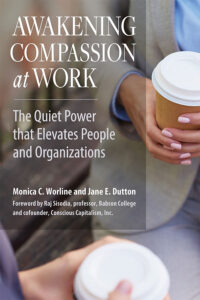
What’s getting in the way? What have you noticed has gotten in the way of your research and in the book that’s stopping the leaders from doing this, or maybe they’re skipping steps as you talk about noticing, feeling, or responding?
One false set of assumptions is it takes a lot of time. No, it doesn’t. It takes very little time to be present to other people, for example. That presence unlocks strength in another person so that they can help figure out how to deal with this suffering. That’s one example of false assumptions about, A) The importance of this capability, B) Assumptions about all the downsides of it.
There is also an assumption that it’s soft and heart-centered. All those things that are often associated with the relational side of an organization’s existence tend to be, at this time, downplayed relative to technology, economics, and all these hard real business issues. They’re completely intertwined as where talent migrates to organizations that have these better cultures where people can grow, feel healthier, and all those kinds of things. Hopefully, the discipline of the talent market will get organizations to respond better to developing these kinds of competencies.
I get crushes on business leaders. My current big crush who has been there for a while is Satya Nadella at Microsoft because he espouses compassion as such a central value. Microsoft has 120,000 employees, and we’re not talking small. It is one of the most successful organizations on the globe. When I have students who work for Microsoft, we do a Microsoft culture case. I have them beam in to talk about what is their lived experience in these different parts of Microsoft.
It’s like, “Is what the leader’s saying up here? How is that trickling down or not to how you’re doing your marketing job or production job?” I bought a stock at Microsoft. A couple of these testimonies were like, “It’s remarkable. It’s beautiful. It’s so possible.” It means you have to have people at the top who believe it. A lot of people espouse it but don’t live it.
You have to have people at the top who believe in that culture. Many people espouse it, but they don't live it. Share on XThe key is living it and having folks walk the talk, especially the leaders of an organization. I’m working with a hospital in Florida. They changed their approach around not only caring for the patients, but they also said, “Let’s care for the patient’s caregiver first.” They began caring for the nurses and people first. Guess what happened? Their burnout rates went way down. Their turnover rates went from 50% down to 10%. Their patient safety scores went through the roof. (Here is a link to a presentation about this work with Hendry Regional Medical Center).
It works when you walk the talk and you help people thrive. They had a tagline that was trying to create each other to thrive and create joy in the workplace, which is the hospital in their case. It’s sticking too. It’s sustainable. It’s been going on for a year and they believe in it. The people are saying things like, “I’m excited to come to the hospital to work again.”
It’s powerful. It’s about how people are going to show up and people can lead with a bigger purpose and connect with humans in a different way. I love how you’re talking about human flourishing. When I met you at the Positive Business Conference, you impacted me. I was sitting there in your classroom learning about resilience and addressing and understanding my positive identifiers. That was the class that you taught that day because it was a sub-session or a group of us were able to listen to you. I was sitting next to Mindi Cox, and she was saying, “You’re my crush.” It was fabulous.
To me, you gave me the confidence to look at the positive experiences in my life. I wrote them down in the first chapter of my book and said, “I do believe in positivity. I do believe in other humans. I do believe in learning from darkness when I’ve had my own tough moments. I had to have my own self-compassion to pull myself out of that.” I use that as my reservoir. You taught me that. I used that as a reference in talking about resilience too.
I’d love for people to understand and believe that we can feel and do something about how we feel and use it as a way to be positive in the world. As you said, if we notice, if we’re able to then feel, then we can do something impactful. First of all, I want to say thank you for helping me have that foundation. I grew confident from that class alone.
I can tell you after I’ve done my research thing but also all these years of teaching students. Especially for students that have a lot of job experience, this matters, and this works. I don’t think I’ve played my grandmother card yet, but as a grandmother, I’m terrified for them in terms of this society that they’re facing, their work worlds, as well as their neighborhood worlds. Unless we can understand how to unleash human goodness, capacity, and capability to do things in a different way, we are doomed.
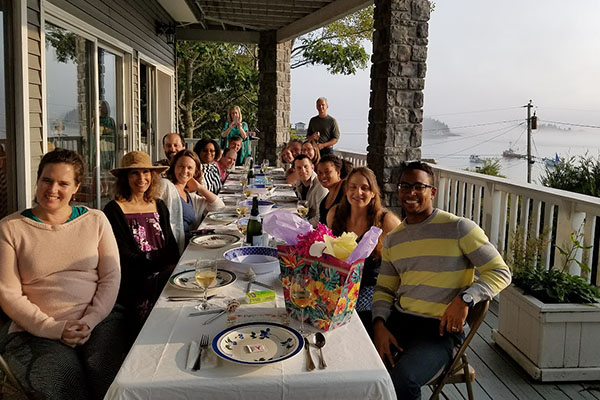
My sense of passion and urgency comes from this, not only because believing there isn’t a better way. At some level, it’s duh. A lot of this stuff is duh. It’s not rocket science. It’s like, “Be kind to people. Be generous to people. Treat them with respect. Trust them.” You were taught the stuff, but somehow, the way we’ve designed organizational processes and stuff undoes this.
This is what’s key to human health, well-being and resourcing to deal with the vexing but important technological challenges and economic challenges, all these kinds of things. It’s like we’re drying up the human resource that we need and we’re not thinking about scaling it. It’s not, “How do we build it into procedures? How do we build it into networks? How do we build it into values? How do we build it so that it’s repeatable beyond having one great leader or one great set of leaders that has to be built into the infrastructure of an organization?”
You talk about high-quality connections, meaning, mattering, and those types of things. How does that fit into what you’re talking about there? Can we build that in a little bit more at our structures?
Monica Worline and I have devised this out of a necessity where people give us five minutes to explain this Positive Organizational Scholarship. Here’s the simple framework that integrates what you asked me about. Martin Seligman, who’s in positive psychology has a much more extensive framework for saying what human flourishing is. He calls it the PERMA model. What he’s doing often is mixing cause and effect, the causes of flourishing versus the manifestation flourishing.
For me, as a betting person, having done the research and read a lot over these years, you can bet on three conditions that are resourcing to people. It is resourcing in that they physiologically, psychologically, and socially increased people’s access to key resources. Those three conditions are positive emotions, positive meaning, and positive connections.
If you can think about any organizational condition, let’s say a meeting or, at the hospital, a shift change, or some marketing plan, and you thought about whatever activity we’re talking about, how could you tweak it and reimagine it in a way that makes sure that people, when they’re doing that activity like when they’re in a meeting that they experience not fake but genuine positive emotion?
It could be just contentment. It doesn’t have to be like these energetic positive motions. It is more positive motion and more positive meaning. By positive meaning, I mean positive self-meaning like, “If I’m in that meeting, do I feel like I matter? Do I see myself as a person of worth and value?” A positive job meaning, “Do I see my job as worthwhile and valuable?” Positive organizational meaning, “Is it in that meeting that am I reminded that my organization is doing work in the world that’s significant and valuable?”
The high-quality connection relates to this third side of the triangle has no meaning. It’s just remembering three things. The high-quality connections is this idea that micro-moments of human interaction are where we feel alive. That’s what is resourcing to people. There are all kinds of medical and other kinds of evidence that are like, “They’re powerful, 40 seconds.”
The book, Compassionomics, pulls together all this research. The two doctors that wrote it have these report on these studies which says, “Forty seconds of a high quality interaction between a doctor and a patient has a long-term impact.” Think about how any leader or team could reimagine any routine or activity so that people experience more moments of positive emotion, positive connection, and positive meaning, knowing that those are resourcing people.
It’s not that you’re making it all sunny. In fact, if you’re dealing with a crisis decision, that’s when you need it most. That’s how I put them together. I think of mattering or positive meaning, positive self-job, organizational meaning, and positive connections as resourcing conditions that then make it more the trajectory of possibility, more resourcing, and more resourceful for people.
If I’m checking in with my people asking questions like, “How’s your day going? What does a good day look like? How’s that happening?” as a leader, if I could step in and say, “How can I help you to work through this,” so I can understand maybe what the barriers are, would you say those are examples of trying to connect in a more positive way rather than coming over the top to say things like, “Why isn’t this done or why are only 3 things done out of the 10 things we talked about?”
These are real things that have happened to me. I’ve been in those situations where I’m going to give you some tough love or give you space to work and have autonomy. I’m going to give you help along the way, then I’m still going to be held accountable, yet it’s going to be to check in for understanding to say, “What’s going on? Is there a barrier? How can I help you? What’s causing this?” rather than come down and hit you over the head type of thing, which is the leadership model that I grew up into that I’m trying to change.
Certain industries, too, institutionalized that way of being. You’re changing by the questions you ask and the way that you ask. You’re not changing how someone feels in a defensive mode or a more generative open mode. That’s the way our brains and our bodies are built to be in these two modes. You’re also changing, if you can imagine the connective tissue between you and that person. Not just in that moment but in what’s likely to unfold in the future.
That connective tissue, like connective tissue in our bodies, can be healthy or unhealthy. You’re making that tissue unhealthy, which means you can’t tap into it in the future. It doesn’t mean you’re changing standards. It doesn’t mean you’re letting people off softly. The way you’re engaging them to learn, adapt, and get better is by resourcing them to do that faster in a more efficient way than the old hard knocks way.
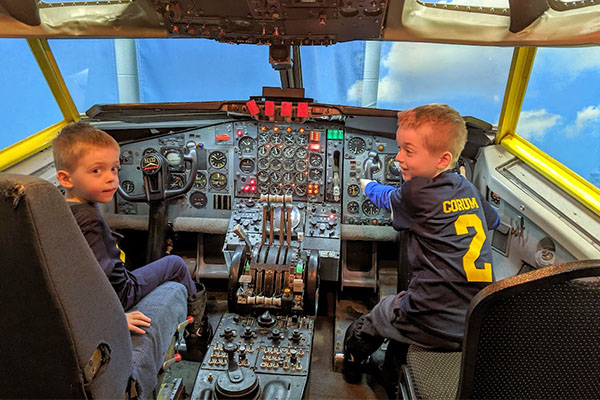
Think about how you treat your dog. Do you treat your dog with tough love or do you treat your dog with love? What does it mean your dog will do for you? That’s pathetic. I don’t mean it, but it’s like any living thing. What David Cooperrider and Kim Cameron are talking about is heliotropic. That means it is because it’s alive, it will lean to the light because it needs the light to grow. Tough love is not light. It’s dark. In these times, people are particularly hungry for meaningful connections.
The light is where we thrive. I do like the dog analogy because I always think dogs are in the present. I’ve talked about that on different channels where my dog loves to see me. I’ll walk outside, I forget something, and come back in. They’re all excited to see me again. All of a sudden, we’re living in the present to make the most of a situation, so I love your analogy.
Back to the hospital situation, as I’m thinking about it, and also an organization I used to work at, we needed to shift our mindset to believe in the people that are working with us and with each other. I like Carol Dweck’s work on mindset too. It is the whole growth mindset element of how we had to look at people and say, “There is potential there.” There is this untapped potential that you’ve been talking about, Jane.
If we don’t believe that in our people, they’re going to feel it, read it, and sense it. They’re not going give us what we all could do together. They’re not going to be as impactful. They’re not going to be able to be as proud because if you think about what they could do, feed the possibilities, give them encouragement, recognize, and give them appreciation, anything is possible.
We’ve seen that at this hospital example that I was talking about and the examples you’ve been talking about like Microsoft and other areas. It’s that slight shift of being human, that connectivity. When you talked earlier, too, this is sticking in my head about noticing and feeling before we could respond. For some reason, it keeps coming back up, so I’m going to bring it back up. I’m a big advocate of inclusion and belonging.
There are been such a miss about how people are working with this need or this ability for us to get us all on an equal playing field so we all can think about how we have a greater need and greater belief inside of all of us. Where I think understanding more with the people I’m working with is people are noticing, but when people are noticing, it is almost divisive. The feeling becomes divisive, then we stop the work or we think it’s a word or playing favoritism. I don’t understand.
What I think is missing based on what you said earlier is that feeling of being human where we look at each other regardless of where we come from, what we look like, and our ability to reach inside to say this light that is there in all of us that can do so much more. We got to think about that more broadly rather than what we’re noticing is getting in the way.
If we’re noticing, then we should be able to move to feeling. When we start to feel where we’re coming from and what’s possible, we should be able to respond more intelligently and more with that connection of mind and heart. I don’t know what your thought is on that. It’s something that keeps coming up as I’m thinking about this.
When we start to feel where we're coming from and what's possible, we should be able to respond more intelligently with that connection of mind and heart. Share on XThat’s why I feel like designing for high-quality connections is so important because if we’re primed to see difference, oftentimes, it becomes self-fulfilling. We don’t see our common ground in our common humanity. On the other hand, I listened to a podcast that you did where you were talking about your own awakening around inclusion. I didn’t finish the whole thing, but I had a similar thing where I assumed I made assumptions about similarities without exploring between myself and particularly my African-American Black students.
Even though I thought I had educated myself and stuff like that, there wasn’t a safe space to explore what their lived experience was. I assumed if there were not a lot of voices, this is my own naivete and stupidity. There is so much that we need to do to create these safe environments and to prime ourselves that whatever our priors were to look for the best and the other, but it has to be deliberate.
Creating safety and priming people for our shared humanity and shared good is important to be able to explore the kinds of wounding that people are experiencing, for example, and to be brave enough to co-create better solutions than what we currently have in the workplace. It’s so divisive still. That’s such a long way to go.
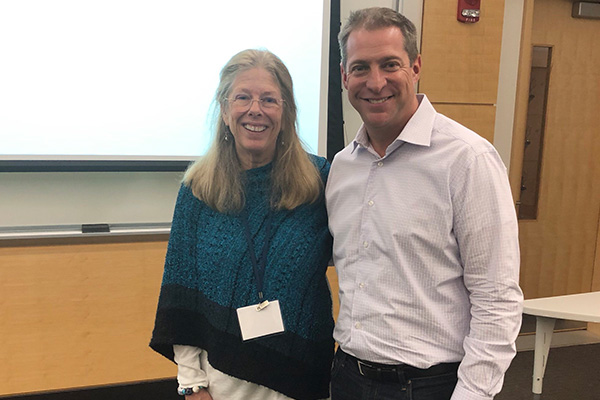
We’re on the way, but if we’re in environments where history is being erased and we don’t want to know about wounding that’s happened for different groups, etc., then how can we possibly work towards collective healing? That’s being a grandmother and being worried about what’s going to happen. That’s my close-in worry. I worry as a human being about our culture. There are so many good things about the world we live in and so many good things about what could be unleashed in workplaces.
Our means are getting in the way of that human stuff. That’s why I love great organizations. I love reading about great organizations or moments of deep humanity in an organization where they did extraordinary things and did them in ways for people. This is maybe a stupid example, but I’m at the University of Michigan. It is a sports university, Big 10. I had no idea what I was getting into when we came here.
Our football team, the way that people would describe how the team members felt wasn’t that they were performing well in the field, but they felt like they were growing to be better people being part of this team, and it was gorgeous. It was gorgeous at least to watch from the outside. As a faculty member through various channels, you had an inside take on what the lived experience was of people who were working with the team as well as some of the team members. At least until I’m persuaded otherwise, it was quite a great team in the sense of not performing well but being a great growth vessel for humans. That’s so gorgeous to behold. It’s so possible. My guess is it wasn’t done through money.
I wouldn’t say it’s the cause, to your point. It sounded like the team came together and let their biases down. They work together probably with a greater cause and purpose. They tend to see teams that care for each other and even share love, lead with love, and connect in different ways. Those are the teams that are making a huge impact. They believe in each other and they all have a role to play.
It seemed like that’s what was going on there. I do want to circle back to your vulnerability for sharing what you shared. I wish that we could all sit back and think about our own way in life and check in and be vulnerable ourselves. Are we being the best person? Are we being our authentic selves the way we were meant to be? Are we acting that way with every person? Maybe small interactions can make a difference, or are we doing that and making the impacts that we want?
I’m pushing on that because I feel like we’re not even noticing. We’re so busy. We’re on our phones, got to do our next task, or got to go to do our next meeting. We got to slow down and notice if we are being the human being that we’re here to be. That’s something that’s important. I know you do this thing called job crafting. I’ve heard some pretty cool things about that. Are there a couple of steps that someone could think about to help them shape their job or maybe even describe it? What that might look like for somebody?
Job crafting is such a simple idea and cool to see it take off. I especially like it because this came about from our wonderful graduate students, including Amy Wrzesniewski. We did this study way back on hospital cleaners and how they were doing their work. There was a certain percentage of hospital cleaners who considered themselves healers.
They re-engineered their job with small moves that made them able to live this experience or this more purposeful way of thinking about their job as contributing to the healing of the patients, which they were doing. For the most part, they were doing that. Whether or not they were conscious of it, they made a big difference. Job crafting is how we re-engineer our jobs from within that make them more sustainably engaging. We found that, for our work, there were three major ways that people did that.
One was through what we called cognitive crafting. It is the way you think about your job. I used to think of my job about research publication. When I crafted my job to think about, I’m making a difference in students’ lives. You think I would’ve thought that the whole time, but that was not. My first twenty years were not how I thought about my job, even though I was doing the same thing.
Once I got that meaningful teaching as part of my job, I experienced my job completely differently. I also did things differently that made me want to stay in the job as opposed to leave the career. One whole way that people craft their work is by changing the meaning. Managers, leaders, or organizations can make it easier or more difficult for people to do that. The second is relational crafting. It’s how people re-engineer who they’re in touch with and how they engage people that they’re in touch with in ways that make it more sustainable and engaging.
I was most alive when I was with my graduate students. Over time, I changed my job so that I had more time with them. Even the people in the most constricted jobs have some zone of possibility about crafting their work so that they at least, even if they’re not interacting, they’re thinking about people who they have more high-quality connections with. Those are cognitive crafting, relational crafting, and task crafting.
Even the people in the most constricted jobs have some zone of possibility about crafting their work, so they think about people they have more high-quality connections with. Share on XThat’s, at the margin, changing the work that you’re doing. When we’ve done job crafting with teams and people are talking about, for example, the tasks they like and the tasks they don’t like, people will go, “Do you like that? Here, let’s reallocate so that you’re doing more of that. I’ll take that thing that you think is so nasty. I’ll take that on. That’s much better.” Job crafting is about how to change the work you do. It is not changing what you’re delivering. You’re still delivering the same thing. Instead of managers from the top down telling you, “This is the way you have to do it,” it gives people more autonomy about how they can recraft their work.
Some organizations have adopted this wholeheartedly and have job-crafting conversations all the time. McKinsey adopted job crafting for all their people who were plateaued like administrators that couldn’t go any higher. We have a tool called the Job Crafting Exercise. You don’t have to have the exercise. You need a systematic way of going through the way you’re currently executing your job and reimagining it at the margin by 10% or 5% in a way that puts you on a path where it’s more sustainably engaging.
That’s what job crafting is all about. There is a great book. It’s by Rob Baker called the Personalization of Work. His organization specializes in job crafting. The book’s good. We have a Harvard Business Review article. If you google the Job Crafting Exercise, you could get the exercise. There are a whole bunch of videos and other resources attached to job crafting.
I referenced positive identifiers and talked about that a little bit. For you, Jane, I’m sure you’ve done that exercise. If you go back in time, are there some positive identifiers in your life in your younger years or over time that is showing up now? I know you’re retired. Are there some of these identifiers that are staying with you now?
I’m owning the fact that I’m an ally and a coach to a lot of young people in my field, especially members of underrepresented groups. One of my strengths is I see people’s awesomeness before they see it in themselves. That’s a gift. I didn’t ask for that. I didn’t call that. Ever since I was a little girl, I didn’t get why people didn’t see their awesomeness.
I’m good at that. At the same time, I’m pragmatic about you have to do certain things in certain ways. People would say I’m pretty tough, but I only do that against the context of, “You are so unimaginably fantastic.” At my best, not always, but that’s what I’m doing. I claim as part of my identity that I am an ally. I’m trying to be better as an ally. I still have a lot to learn about what it means to be a good ally. Especially for my Black colleagues, I feel like I’ve got so much to learn. It is to learn and learn then I’ll die. I don’t feel like I’ve got that much time left. Anyway, I am claiming that.
We’ve created this other new tool. I told you I have this entrepreneurial side of me. Monica Worline created this tool called a Connectionscape that allows you to make yourself aware of, “Who do you consistently have high-quality connections with? Who do you consistently have low-quality connections with? Where are dormant connections that were once high-quality but they’ve gone dormant and neutral?” We take them through a process where they try to think about how they could invest in small ways, in ways that change their connection landscape so it’s more uplifting.
Connection Scape helps make yourself aware of who you consistently have high-quality connections. Share on XFor me, now that I’m in that dormant category, the biggest change that’s happened in this time that I’ve been semi-retired is I have reignited some friendships that I had. One is in high school and one is in college. I had to call them up to raise money and they both turned me down. I had not been in touch with either one of them for many years. Anyway, that turned-down conversation morphed into, “That was a fun conversation. Let’s have another one.” Here I am, years later, and now we’re taking trips together. Another part of my positive identity claim is I am a good friend. The fact that I have durable dormant relationships, that can be reignited. I’m choosing to think that means that I’ve got good friend potential. That’s another part of my positive identity.
You are a good friend. Maybe you’re an ally and a leader. You’re someone that has changed the course of how we could think about bringing out the best in people in organizations. You’re one of those people. You’re so well thought of by means too many to count as you could imagine. I know you’re humble about it. I love the fact that you’re a continuous learner. It’s hard to be a teacher if you don’t learn. That could be a leader, a coach in the community, or a community leader. If we’re not learning and looking into the world like we’re doing all the time, then how do we teach and get people to get excited about what is possible? I appreciate you so much.
Thank you, Darrin. I’m wishing you the best in this new chapter that you’ve crafted. I wish you meaningful success, whatever that looks like. It’s a gift to have health as you know. It’s a lot easier for me to sit here and spout this than it is to do it. I have so much respect for leaders who make this stuff happen. It’s one thing to espouse it. It’s a whole other thing like in the consortium. For example, listening to what people are wrestling with, especially in these business conditions. It’s tough. I also have a lot of deep regard for leaders nowadays who face tough issues.
That’s hard. With that said, could I ask you rapid questions with quick responses? You’ve talked about different organizations that are doing the work well. Are there a couple more that come to mind where leaders have stepped in and are making a real impact with their organizations? Are there others?
You talked to Rich Sheridan of Menlo Innovation, and we’ve got some great locals like Zingerman’s, Menlo Innovations, Cisco, Costco, and another one of my favorites, Southwest. Southwest had a rough go, but they would’ve been one of the ones that I singled. I have also looked at thriving units within larger organizations.
There are usually units within a particular organization that are exemplary in some ways. They have written a lot about the billing department at Jackson Community Hospital. This was a while ago that was off the map in terms of how compassionate and how effective they were. Raj Sisodia, who is one of my heroes, has written a book called The Healing Organization that has listed a lot of great organizations that are not only successful financially but also competent in terms of compassion and other kinds of virtuous behaviors.
Most organizations have pockets in them that are flourishing. Another person that has had a huge impact on me besides Raj is David Cooperrider. Their Appreciative Inquiry as a change process assumes that you take people through an inquiry process and an organization. You locate moments and units of positive deviance and start with those as the light-giving part of it on how to learn and change other parts of an organization and to imagine a different future. I do believe in most organizations there are pockets of extraordinariness that we can learn from.
In most organizations, there are pockets of extraordinariness we can learn from. Share on XA couple of messages there that I take away too is that for folks that are in organizations, not having to wait for the culture to happen to come down, wherever you are, you can have an impact. You could create these pockets yourselves. I also love the Appreciative Inquiry elements because as we’re asking people questions back to that level of inquiry and then getting input from other folks, we’re showing people that we care. We want your input.
If we do something about it, now it comes back to noticing, feeling, and responding again. If we do something about it, that’s when real change starts to happen, which is cool. Where can we pick up that new work that you have going on so we could figure out how we think through the dormant relationships? Is that something that’s coming out? Is that an article? Is that a book?
It will. It’s called Connectionscape. It should be out within the next months.
We’ll look for that.
We’re going to build through EnlivenWork, which is a company that Monica Worline is involved with. She’s the CEO of this company. We’re developing an online course on high-quality connections where Connectionscape is one of the tools that are part of the course that you can either take on your own or you can take it as it is. We’re also developing an organizational compassion course. That’s what I told you about this little entrepreneurial thing.
I’m curious too. Did you have a favorite course that you taught or maybe it’s related?
I’m proud of the syllabus. It’s called Flourishing at Work and Beyond. The syllabus is designed as a resource for people.
I’d love to add that in.
Monica Worline is teaching it now at the University of Michigan. It’s not just positive psychology. It’s about how you organize for flourishing a broader way in a more sustainable way. Monica and I are working on a book that she’s leading called Designing for Flourishing that’s built on that course, but that’s based on previous experience.
I’m smiling and laughing because you’re retired and have all this wonderful activity. I know it lights you up. That’s the thing about work that we love to do, that we’re passionate about brings you joy and it lights you up. The impact you’re having is phenomenal. The testimonial and the work that you’re doing with not only my book and other things but it’s been incredible to the far-reaching impact you’re having. You’re paying it forward every day. I love people that are willing to pay it forward. You’re doing it the way you go about your day from learning, teaching, and sharing like you offered. That’s incredible. One last question, what’s bringing you Joy?
My grandchildren. That’s easy. I live in the same town as both my daughters and my grandchildren and my husband. What’s bringing me joy is health and the capacity to be with loved ones. I don’t think it gets better than that.
I love that and I second that. I admire you and all the work you’re doing. I’m in awe of you and honored to have learned from you. I’m grateful and I appreciate you taking the time. I hope we can have another conversation like this when you have your book come out or when your next set of research comes out because I know you’re never going to stop learning and never stop impacting us. Thank you so much. Thanks for being on the show.
Take care. Best to you.
Thank you so much.
—
I admire Jane Dutton so much. She just gave us a pot of gold in the form of many nuggets of wisdom. We each need to determine how we melt these nuggets into reshaping our future and igniting positive organizations where people can thrive. Many things in life, it is up to us to determine what is possible. The amount of resources and examples Jane shares in this episode is incredible.
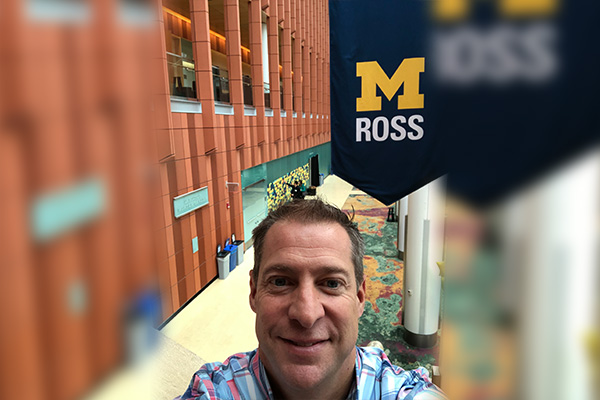
It is priceless for anyone looking to relearn the path to unlock human flourishing. For example, she even includes a link to the syllabus from her favorite class that she taught at the Ross School of Business. Take advantage of these resources and look at least one piece a day for a month to start a new set of positive habits that will set you on an amazing journey, I promise.
Also, consider practicing the job crafting steps for your role and your teams because I love that it can help us create more joy and purpose in what we do at work. Jane also talks about using compassion and empathy and the darkest moments at work. These exist in various levels and practices and are about being present with the people you care about.
If you do this at work with genuine care, you will create high-quality connections that are mutually beneficial for you the team that will inspire personal growth and you guys will achieve things that are unimaginable at this moment. We agreed on the show that our world is too divisive, and we need to open up our minds to stop and notice. Begin to feel with meaning and respond with actions that make a difference for the greater good.
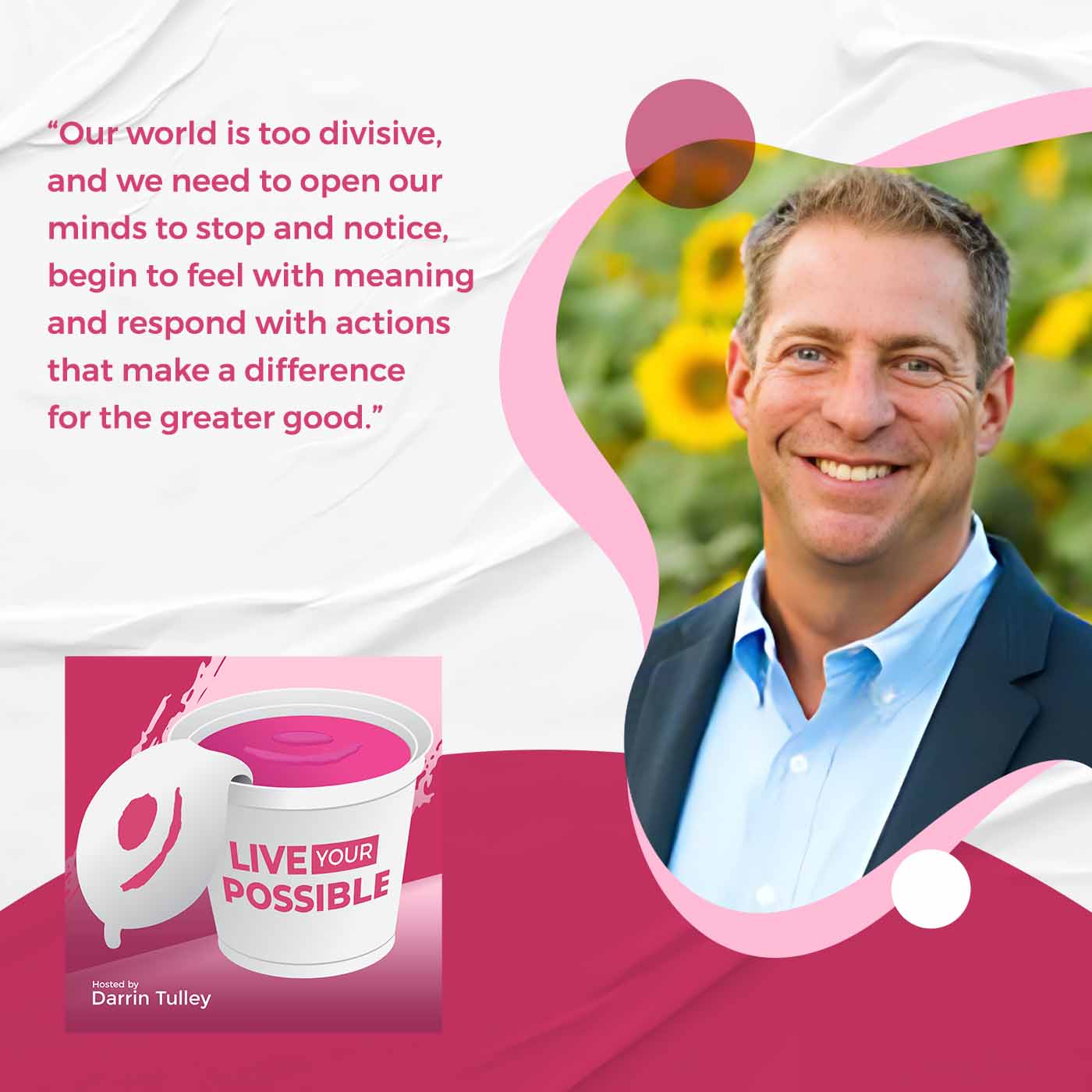
My challenge to you is to stop seeing, to react first, and to add a step. Let’s stop to notice then feel as a second step with genuine care and emotion before the third step to respond with action, not reaction. You should read or listen to this episode a couple of times to capture all the gems that Jane is handing us to take into our parts of the world.
Let’s help her take on this movement to spark human flourishing from being viewed as soft to becoming the new imperative in the workplace and our communities. As we incorporate these transformative ideas, we become more aligned with our happiest, authentic being and not only help others to be their best, we can live our possible.
Important Links
- Center for Positive Organizations
- Awakening Compassion at Work
- Compassionomics
- Personalization of Work
- What Job Crafting Looks Like – Article
- Job Crafting Exercise
- Menlo Innovation
- The Healing Organization
- Appreciative Inquiry
- EnlivenWork
- Flourishing at Work and Beyond
- https://Sites.Google.com/umich.edu/janedutton/home
- https://PositiveOrgS.bus.umich.edu/about/20-years-of-impact/
- https://www.Linkedin.com/in/jane-dutton-2212484/
- https://www.Amazon.com/dp/B09SBVC7LF
About Jane Dutton
 Jane E. Dutton is a Robert L. Kahn Distinguished University Professor Emerita of Business Administration and Psychology at Michigan Ross Business School.
Jane E. Dutton is a Robert L. Kahn Distinguished University Professor Emerita of Business Administration and Psychology at Michigan Ross Business School.
Jane Dutton’s research and teaching focus on understanding how to foster human flourishing at work. She sees a critical connection between understanding theories of flourishing at work and the importance of building and changing work organizations for the better. Her current research and writing focus on compassion at work, high quality connections, positive identities, and their roles in human flourishing.
In 2002, she cofounded the Center for Positive Organizations at the Ross School of Business and has played various leadership roles in the Center since its inception. Her past research explored processes of organizational adaptation, focusing on how strategic issues are interpreted and managed in organizations, as well as issues of organizational identity and change. She has been honored to receive the Distinguished Scholar Award from multiple divisions of the Academy of Management as well as the Distinguished Scholarly Achievement Award from the Academy. Her co-authored research has won the Administrative Science Quarterly Award for Scholarly Contribution, the Best Paper Award from the Academy of Management Journal, and the Breaking the Frame Award from the Journal of Management Inquiry.


